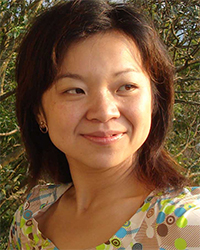302-1
886-2-2789-6763
khlin [at] phys.sinica.edu.tw

302-1
886-2-2789-6763
khlin [at] phys.sinica.edu.tw
陳雯琪 / 886-2-2789-8948
wcchen[at]phys.sinica.edu.tw
| (1) | 國內學術研究獎項 | 2016-12 | 國家新創獎-最佳產業效益獎 | |
| (2) | 國內學術研究獎項 | 2013-03 | 台灣女科學家新秀獎 (Taiwan Outstanding Young Female Scientist Award) | |
| (3) | 其他國際學術研究獎項 | 2011-08 | TWAS Young Affiliates |